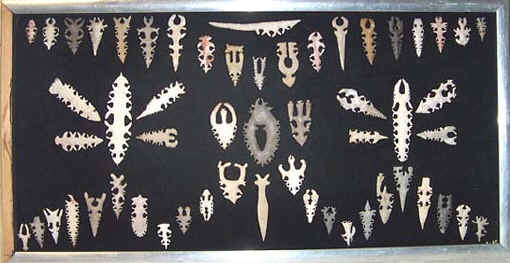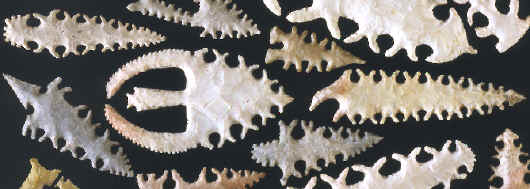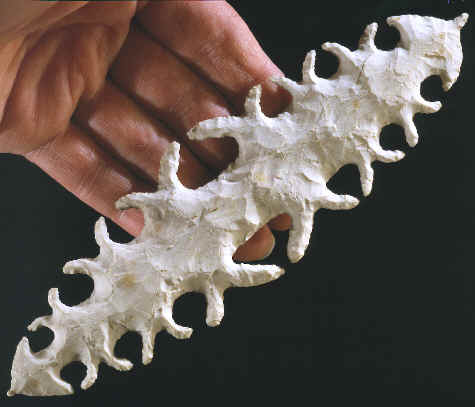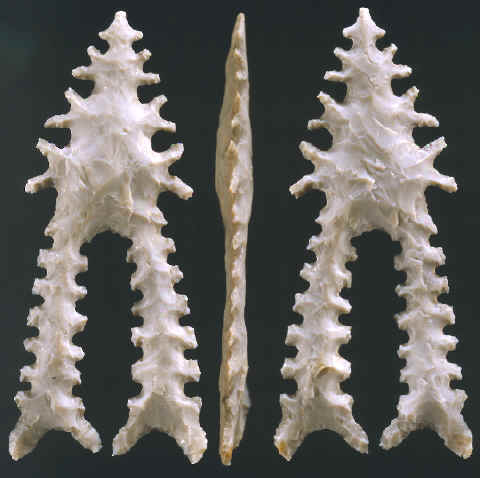|
|
|
|
|
"In my humble judgment the preponderance of legal evidence is on the side of the authenticity of the eccentric flints of Delaware County, Oklahoma". ---1948, Claude U. Stone.
MACK TUSSINGER'S
OKLAHOMA ECCENTRICS The above statement "In my humble judgment the preponderance of legal evidence is on the side of the authenticity of the eccentric flints of Delaware County, Oklahoma" was made by, Claude Stone, a famous Illinois collector in 1948 in the journal of the "Illinois State Archaeological Society." The Mack Tussinger eccentrics were controversial from the beginning. Some people still believe they were made prehistorically by a late Stone Age culture. But most professional archaeologists and flintknappers consider them to be recently made and not the product of an ancient culture. Actually, both sides have some truth in them. They were apparently "rechipped" from old bifaces, projectile points and knives. "Rechipped" or "rechips" are terms used by some collectors and flintknappers for a category of prehistoric artifacts that have been recently altered in modern times by pressure flaking to make them more symmetrical. The main reason for doing it is to make them more pleasing to look at and more valuable the next time they are sold. |
|
|
Mack Tussinger sold Stone Age artifacts most of his life. He began selling them in his grade school years to a doctor when "arrowheads which were good brought 10 cents apiece." and he would "hitch the nag to the hack and drive the 7 miles to Seneca to take some choice pieces to add to the doctor's growing collection." |
|
|
Mr. Tussinger, a Wyandotte Indian, married Susie Bearskin sometime around 1920 and moved to a small 40 acre farm at Turkey Ford near Wyandotte, Oklahoma. It was while walking the fields near the woods in either 1921 or 1926 that Mack claimed to have made his famous discovery. He reportedly found a "grass covered mound" where he dug into and found "one of the most outstanding treasures of antiquity", the famous ceremonial eccentrics. |
|
| CONTINUE ON TO PAGE TWO | |
|
"REFERENCES"
1940,
"Study of the Oklahoma Eccentric Flints", by H. Holmes Ellis, 7
pages. |
|




